





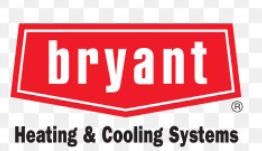


























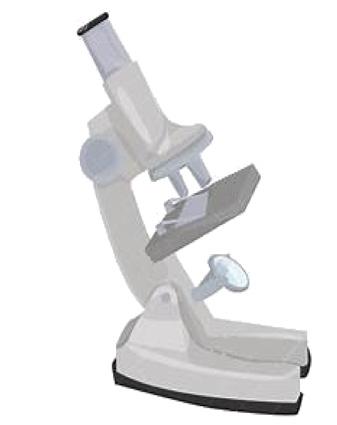


by Janet Spencer
The human body consists of 59 different elements. Of those, just six of them account for 99.1% including carbon, oxygen, hydrogen, nitrogen, calcium, and phosphorus. Of those six main elements, oxygen makes up 61% of the body, mostly when it’s combined with hydrogen to form water. Follow along as we take an interesting look at our human bodies, and these six elements of which we're mostly made.
• The bones in your body collectively weigh about 20 pounds. Bones are the only things in the human body that never form a scar when injured. Broken bones knit without leaving any trace of the injury. Even when large chunks are removed from the bone, it will grow back to fill the void if provided with a surgical scaffold to do so.
• What’s the difference between tendons and ligaments? Tendons connect muscles to bone while ligaments connect bone to bone. Tendons might be considered to be an extension of the










(Answers on page 16)








1. MOVIES: What is the name of the fictional country in “The Princess Diaries”?
2. GEOGRAPHY: What is the highest mountain in Africa?
3. HISTORY: Which ancient civilization built Machu Picchu in Peru?
4. TELEVISION: Which city is the setting for the TV drama “The Wire”?
5. U.S. CITIES: Which city’s nickname is “City of Roses”?
6. MATH: When is Pi Day celebrated each year?
7. LITERATURE: During what historical period is the graphic novel “Persepolis” set?
8. CHEMISTRY: Which element is also known as quicksilver?
9. SCIENCE: How much of the Earth’s water is held by oceans?
10. MUSIC: Who performed the hit song “Never Gonna Give You Up” in 1987?

"Fearfully

• Although there are over 8,000 different ways for the body to malfunction in a manner ending in death, the cause of death for everyone is ultimately the same -- oxygen starvation to the brain. Here are a few facts about the conditions most likely to result in our final demise.
• Leading causes of death in 1900, such as tuberculosis, gastrointestinal infections, and diphtheria have seen huge decreases in death rates and are no longer among the leading causes of death in the United States. However, other causes such as heart disease and cancer have increased.
• In 1950, 600 out of every 100,000 people died of heart disease, but today, just 168 out of every 100,000 people do. However, it’s still the leading cause of death. Heart disease kills about the same number of Americans each year as cancer, flu, pneumonia, and accidents combined. About one out of every three Americans dies of heart disease.
• Going for a walk on a regular basis cuts the risk of heart attack and stroke by over 30%. Being on your feet and active for just 11 minutes a day after age 40 adds an estimated 1.8 years of life expectancy. Being active for an hour or more a day adds 4.2 years. Today the average American routinely walks about a third of a mile a day, including every step taken in and around the house, work, and various errands.
• About 80% of American men and 77% of American women are overweight, with 35% of those groups being clinically obese. Over half of children born today will be obese by the time they reach the age of 35.
• Between 1980 and 2014, the number of adults worldwide with diabetes jumped from 100 million to 400 million. Of those, 90% suffer from Type 2 diabetes, which is largely acquired through lifestyle choices.
• There are about 7,000 different genetic disorders known to medical science.
• There are about 50 types of autoimmune
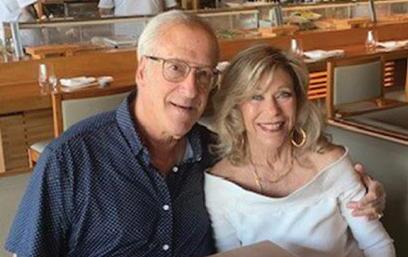
disorders. About 5% of Americans suffer from some kind of autoimmune disease. 80% of them are women.
• About 700 people die every year from anaphylaxis, a deadly allergic reaction. The most common triggers are penicillin, certain foods, insect bites, and latex, in that order.
• About 400,000 people come down with appendicitis in the U.S. each year, and of those, 300 will die. About one out of every 16 people in the world suffer from appendicitis at some point in their lives, and it’s the single most common cause of emergency surgery.
• Life expectancy increased more in the 20th century alone than it had in the preceding 5,000 years of recorded history. In the U.S., the lifespan for a man jumped from 46 in the year 1900 to 74 by the year 2000. It went from 48 to 80 for women.
• About half of all deaths in the year 1900 were from infectious diseases. Today, only 3% are.
• In 1921, there were over 200,000 cases of diphtheria in the U.S., but by 1980, there were only three. 20,000 cases of polio per year fell to just 7. It’s thought that vaccines saved more lives in the 20th century than penicillin.
• A milestone was set in the year 2011 when, for the first time in history, more people died worldwide from non-communicable illnesses such as cancer, heart disease, and stroke, than died of all infectious diseases combined. We are now living in an age where we largely die of our lifestyle choices.
• Throughout the world, in every period of history, and in every single culture, women tend to live a few years longer than men. No one knows why. One person out of every 10,000 will live to be 100 and one out of every 7 million will live to be 110.






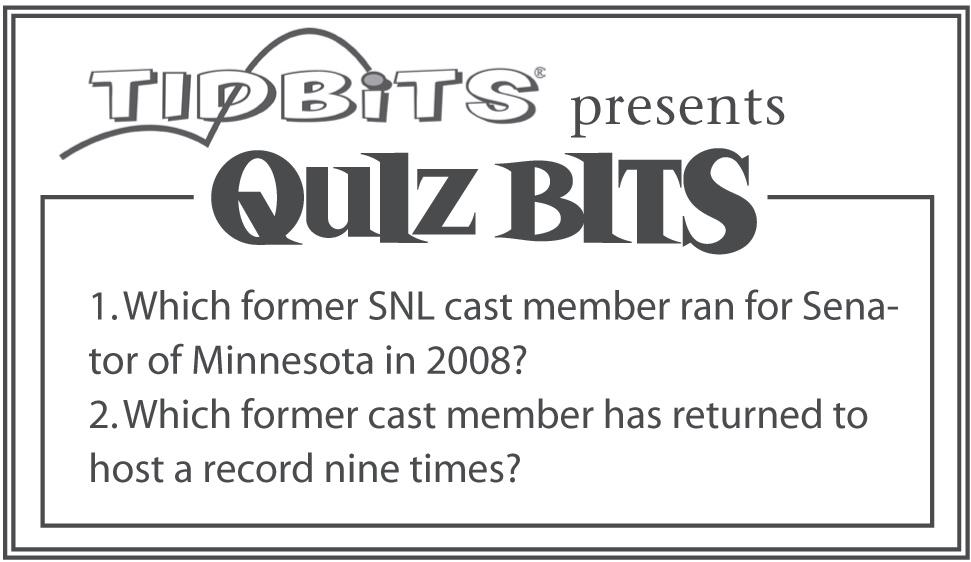
Week of September 15, 2024
Human
muscle while ligaments are a hinge. Tendons are stretchable while ligaments are not. Because tendons do not have a blood supply, it takes them a long time to heal when damaged. Cartilage, when damaged, does not repair itself at all.
• Every day the kidneys circulate and process enough water to fill a typical bathtub to overflowing. The kidneys are responsible for many different functions, one of which is regulating the amount of salt in the bloodstream. Eat too much salt, and the kidneys filter it out of the bloodstream and send it to the bladder to be excreted. Eat too little salt, and the kidneys filter the salt out of the urine and send it back into the blood stream. Drink too much water all at once, without benefit of eating something salty simultaneously, and the kidneys cannot find enough salt to keep the body running. Death results. If a sailor stranded at sea drinks salt water, it puts so much salt into the body that the kidneys are forced to steal water from other bodily tissues in order to dilute and excrete it. Death results if prolonged.
• The very first successful kidney transplant occurred in 1954, when 23-year-old Richard Herrick, who was on the brink of death, received his identical twin brother’s kidney. At the time, no one knew if such a feat could even be accomplished, or if the donor could survive with just one kidney. Richard lived eight more years before dying of the original kidney disease, and his twin brother lived 56 more years on a single kidney.
• Today, about 30,000 people receive an organ transplant in the U.S. each year. Of those, 95% are still alive a year later, and 80% are alive five years later. People suffering from kidney disease


live an average of eight years on dialysis, but 23 years if they receive a transplant. About a third of kidney transplants come from living donors, especially close relatives. The rest come from organ donors on the brink of death. Generally, the median wait time for a kidney transplant is about three and a half years.
• Some mammals have gallbladders, others don’t. Any particular giraffe might have a gallbladder, or might not. The word “gall” originally meant “bile.” The gallbladder stores extra bile from the liver. About 25% of adults have gallstones, but they only become problematic when they block the duct.
• The liver is one gigantic gland. It weighs about the same as the brain, at 3.3 pounds. Babies have large livers when they’re born, giving them a round belly. If the liver shuts down, death results within hours. It plays a part in over 500 metabolic processes. At any given moment, about a quarter of the body’s blood is in the liver. The liver can regenerate and will grow back to its original size even if two-thirds of it is removed.
• The human brain has shrunk over the past 10,000 years, dropping from about 1,500 cubic centimeters back then to around 1,350 cubic centimeters now. We’ve lost the equivalent of a tennis-ball-sized chunk of brain. No one knows exactly why, though one unproven theory is that human brains shrank as they became more efficient at what they do.
The medical researcher who discovered chromosomes in the 1880s named them as such because of how well they absorbed the colors of chemical dyes under a microscope. In Greek, "chroma" means "color," and "soma" means "body".
• The brain takes up just 2% of the body’s weight, but uses 20% of the body’s energy. In babies, however, the brain uses 65% of their available energy. Your muscles use a lot of energy, spread out over many muscles, but the brain’s energy requirements are concentrated in a compact organ. The brain is the most energy-intensive organ in the body.
• Though a mouse has a very small brain, if a mouse were scaled up to be human-sized, the brain would also be human-sized. Whales and elephants have much larger brains than humans, but if humans were scaled up to whale-size, our brains would be about the same size as a whale’s. Few birds have a brain-to-body-size ratio that surpasses that of humans.
PHYSICAL STRUCTURE
• It may seem that the legs drop straight down from the pelvis, but they’re actually angled
inward at a slight V-shaped, meeting at the knee. This gives humans a much smoother walking gait, unlike members of the ape family who are forced to waddle in an ungainly manner due to their less efficient bone structure. A chimp uses four times more energy to walk than a human.
• The reason your nose gets drippy whenever it’s cold out is the exact same reason that the mirror in your bathroom gets fogged up when you take a hot shower on a cool day, or droplets run

1. The average grave in a typical cemetery will receive visitors for how many years following the interment of the deceased?

2. What is the most common cause of kidney failure?


Can you swallow food while hanging upside-down? Yes, because food moves through the esophagus by means of involuntary muscular contractions called peristalsis, rather than simply gravity. It takes about 50 muscles to get food from the mouth to the stomach.


By Lucie Winborne
* It was 19th-century American social reformer and statesman Frederick Douglass who made the following sage observation: “Those who profess to favor freedom and yet deprecate agitation, are men who want crops without plowing the ground.”
* If you use Listerine to freshen your breath, you might be interested to know that its original formula is 26.9% alcohol by volume -- that comes out to 54-proof gargle.
* The blue whale is the largest animal known to have ever existed. The marine mammal is so large, in fact, that a grown man could swim through its largest blood vessels.
* Next time you’re in Tinseltown, remember that it is unlawful to herd more than 3,000 sheep at a time down Hollywood Boulevard.
* In the naming of American states, there some that never quite made it. It’s interesting to speculate about the possibilities, though. For instance, if you currently reside in the state of Kentucky or parts of Tennessee, but for the whimsy of fate, you could be a Transylvanian. Some people once wanted to take parts of Texas and Oklahoma to create the great state of Texlahoma (perhaps displaying a slight lack of imagination). When the Mormon church settled out west, Brigham Young petitioned to have the state of Deseret created, and the land he suggested make up the state included present-day Utah, almost all of Nevada and Arizona, a sizable chunk of California and bits of five other states. Long Island, in New York, even had designs on statehood at one time.
* You might be surprised to learn that in the 19th century, ice accounted for more shipping than any other commodity except cotton.
***
Thought for the Day: “The telling of jokes is an art of its own, and it always rises from some emotional threat. The best jokes are dangerous, and dangerous because they are in some way truthful.”
Tell them you saw their ad in Tidbits!
patronize advertisers, Tell the advertisers you saw their ad in Tidbits! Remember to TELL OUR ADVERTISERS YOU SAW THEIR AD IN TIDBITS!
-- Kurt Vonnegut
(c) 2019 King Features Synd., Inc.


by Mary Hunt


item in your budget so you don’t feel guilty when you reach for that artisanal cheese. Meal-planning apps like AnyList or Mealime can help streamline this process. They allow you to create grocery lists based on your meal plans, reducing the chances you’ll forget something (and have to make a pricey second trip).

by Mary Hunt
If your grocery bill feels more like a mortgage payment these days, you’re not imagining it. Grocery prices have climbed about 22% and higher over the past couple of years. Unlike that fancy latte, groceries aren’t optional. But while we can’t control the prices, we can outsmart them with a few clever strategies, like these:
REMEMBER THE COUPONS!
Ah, the glory days of paper coupons! Back then, we were all about the hunt-clip-sort routine, saving those precious dollars wherever possible. Now retired, Teri Gault and “The Grocery Game “ were game changers, helping us save 30% or more every week. But things have gone digital now -- not as many Sunday paper ads, just apps and in-store scanning. While it’s more streamlined, it can feel like you’re playing a game of high-tech hide-and-seek.
Don’t worry, though, because Kiersten Torok is a new coupon queen on the scene. She started couponing in high school after her parents lost their jobs in 2008, and when the pandemic hit, she doubled down on her skills. Now, she’s sharing her secrets on social media, making paperless couponing accessible to everyone. Check out her money-saving tips at https:// torokcouponhunter.com/ to start saving like a pro.
If you’re into tech, apps like Flipp let you browse coupons from all major grocery stores, and Ibotta offers cashback. It’s like having a digital wallet that pays you just for shopping.
One of the best ways to control your grocery spending is to make a budget -- and stick to it. Start by taking a good look at what you’re currently spending. Those crumpled receipts? They’re goldmines of information. If you don’t have them, your bank statements will do. Add up your average spending and set a goal, whether it’s to shave off $20 a week or just to avoid hitting triple digits every time.
But a budget isn’t just about the numbers; it’s about being mindful of what you’re buying. Before heading out, do a quick inventory of your pantry and fridge. Apps like YNAB (You Need a Budget) recommend a full sweep so you know what you’ve got and don’t end up with a sixth jar of pickles you didn’t need. Planning meals around what you already have saves money and cuts down on food waste -- a win for your wallet and the planet.
Remember: You read it in tidbits!
DON’T FORGET!
If you’re prone to impulse buys -- guilty as charged -- consider shopping online and opting for curbside pickup. When you’re not wandering through the aisles, it’s much harder to fall victim to the lure of endcap displays or those “buy one, get one” deals on things you don’t need.
Plus, if you shop at multiple stores to catch the best deals, ordering online can save you both time and money. Compare prices, fill your cart and pick up everything in one go without the hassle of bouncing between locations. For families, get everyone involved in the shopping process. Make it a game for the kids! Have them help scan coupons, pick produce or compare prices. It’s a great way to teach them about budgeting early on and makes grocery shopping a family affair.
Buying in bulk isn’t just for big families or doomsday preppers. It’s a great way to save money, especially if you split the cost with friends or family. Not everything is a good bulk buy -nobody needs a gallon of mustard -- but nonperishables like pasta, rice or canned goods can be wise choices.
And for perishables, consider splitting purchases with a neighbor or friend. If you both love strawberries but can’t finish a giant carton before they go bad, share the love (and the cost).
Food-sharing apps like Olio and Too Good to Go connect people in the community to share surplus food or buy surplus groceries from local businesses at a discount. It’s a win-win: You save money and help reduce food waste.
Groceries are a necessary evil, but they don’t have to drain your wallet. You can take the sting out of that weekly grocery run with a little strategy -- think digital coupons, smart budgeting, meal planning and bulk buying. So go forth and conquer the aisles, fellow savvy shoppers. For more info, resources and links, meet me at EverydayCheapskate.com/groceryapps.
MON., APRIL 1
* * *
Venice Motorcars LLC c/o Jay Saukkonen 1/16 pg 1C Open Rate April 7, 2024 Vol. 20 - No. 15
Mary invites you to visit her at EverydayCheapskate.com, where this column is archived complete with links and resources for all recommended products and services. Mary invites questions and comments at https://www.everydaycheapskate. com/contact/, “Ask Mary.” This column will answer questions of general interest, but letters cannot be answered individually. Mary Hunt is the founder of EverydayCheapskate.com, a frugal living blog, and the author of the book “Debt-Proof Living.” COPYRIGHT 2024 CREATORS.COM
(Tidbits wouldn't be possible without them)
(You wouldn’t have Tidbits without them)

Speaking of meal planning, this isn’t just a strategy for fitness buffs or aspiring chefs. It’s a lifesaver for anyone looking to save a buck or two (or 20). Start by writing down what you plan to cook for the week or month. Get specific! Don’t just list “dinner.” Write “spaghetti with marinara, side salad.” This way, you’re shopping with purpose, not just wandering aimlessly down the pasta aisle.
And remember to plan for the unexpected. The grocery store can be a minefield of temptations -- chocolate-covered almonds, anyone? Allow yourself some wiggle room for treats or those spontaneous cravings. Make it a line


• Edward Bulwer-Lytton was an English writer and politician in the early 1800s. He wrote prolifically, turning out numerous but rather mediocre novels, plays, poems, and operas. But he is perhaps best known for the opening line of his 1830 novel entitled “Paul Clifford”:
• “It was a dark and stormy night; the rain fell in torrents – except at occasional intervals, when it was checked by a violent gust of wind which swept up the streets (for it is in London that our scene lies), rattling along the housetops, and fiercely agitating the scanty flame of the lamps that struggled against the darkness.”
• In 1982, this memorably bad opening line of a long-forgotten novel served as the cornerstone for a new contest dreamed up by an English professor at San Jose State University in California. The contest, designed to elicit the worst possible opening sentence to a non-existent


novel, became wildly popular and now attracts thousands of entries each year. Each entry is judged by an esteemed panel, professionally trained to pick out the very best of the very worst in what has been likened to “a literary Gong Show.” Enjoy the following examples of recent winners:
• “She was a beautiful woman; more specifically she was the kind of beautiful woman who had an hour-long skincare routine that made her look either ethereal or like a glazed donut, depending on how attracted to her you were.” -Maya Pasic
• “The second she stepped into my office I knew she was Trubble, Sarah Trubble, she was wearing a name tag and I’m a detective.” -Phil Saunders
• “Sunlight streamed through the bedroom window so Marie decided it must be morning and probably the start of another day of disappointments.“ -John Loya
• “She was just like Greta, who’d poisoned her family, burned down my house, bombed six laundromats, and used a gun on anyone that absolutely had to be shot.” -Frederick Ankowski
• “The man squinted his eyes as the blistering cold winds battered his rugged face, his eyes darting about, desperately hoping, daring to dream that amidst the frozen wasteland, he would find the last Klondike Bar that he had hidden in his freezer.” -Oliver Mauser
• “After the unsettling events involving the wicked stepmothers of Cinderella, Snow White, and Hansel and Gretel, the city council set out to ban all men from remarrying until further notice.” -Ezra Greenhill
• “It was a dark and stormy night at the harbors of Sydney, where wind whipped the seawater across the docks and torrents of rain soaked everything the waves could not reach, but luckily for James this story begins at a beach in Southern France, where it was currently a sunny day and James was developing a healthy tan and an unhealthy sunburn.” –Robin Alberts
• “Buford The Bold was the last descendant of the proud Bold family and was particularly proud of how he chose to keep the name “The,” his father’s middle name.” -Marc Luban
• “Thom and Sarah basked in the warm glow of the fire and new love, watching the flames dance a seductive rumba and listening to the dry oak and cedar logs snap, crackle, and pop not entirely unlike Rice Krispies cereal in a bowl of cold 2% milk.” -Candy Mosley
• “It was love at first sight—he was tall and broadshouldered, with a dimpled smile, twinkling green eyes, and in keeping with his combination of statistically unlikely but deeply alluring

features, type AB blood, and that condition where cilantro tastes like soap.” -Ananya Benegal
• “Merlin was weary of spell-checkers after having to come up with a plausible explanation for why the royal baby had arrived via a large white spork.” -Lev Borisov
• “It surprised Gwen that Elmer was behaving more like he did now than he was last Tuesday, but his always-changing attitude remained the same and his otherwise clean-shaven face was smeared with coarse whiskers, reminding her of a stiff hair brush with mostly missing bristles.” -E. Long
• “It troubled Annabelle that her husband kept a loaded pistol on his lap at breakfast, but it was springtime, birds were chirping, and the dog barked when the doorbell rang.” -B. Blammo

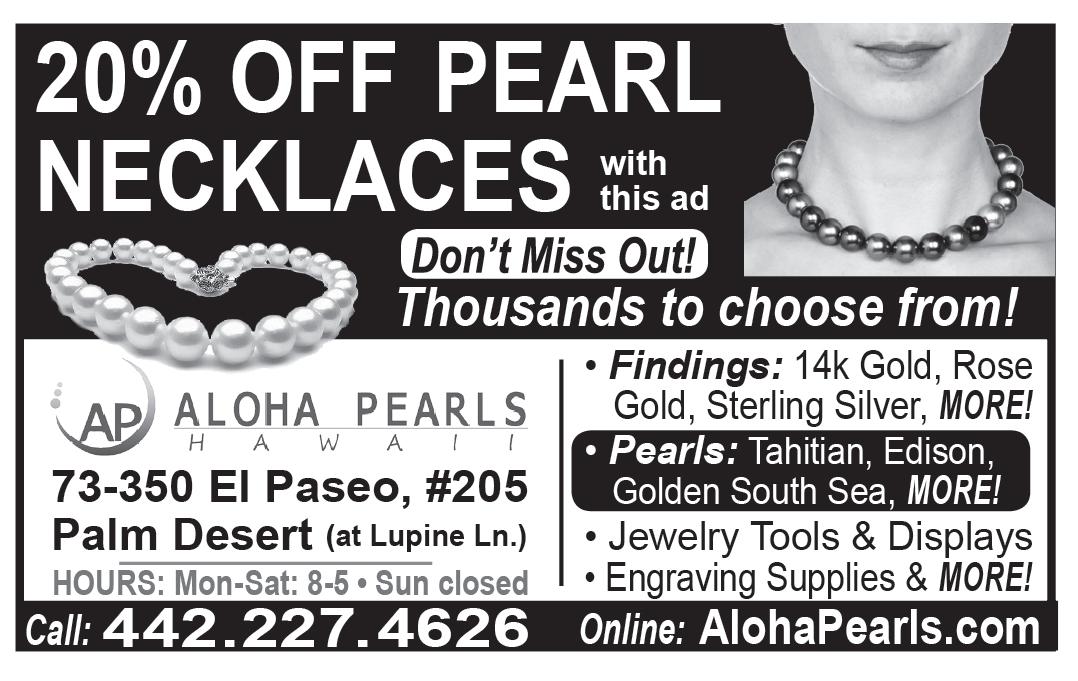





by Dana Jackson

Q: Is “My So-Called Life” ever coming back with a reboot? It was my favorite of the teen shows, but it only lasted one season. -- S.W.
A: “My So-Called Life,” an ABC drama series about a group of teens in the ‘90s, was definitely the first of its kind. It approached topics that were not realistically portrayed on other popular shows at the time, like “Beverly Hills 90210.” It also introduced the world to a talented actress named Claire Danes and launched her movie career, before she found her way back to TV in the Emmy-winning series “Homeland” on Showtime.

While speaking to People magazine in an article celebrating the prematurely canceled series’ 30th anniversary, Danes reflects how the show was “very intuitive” about what a 14-year-old girl was thinking and feeling, during a time in her life when she herself was still a teen. Alas, she’s not interested in ever doing a reboot.
The show was also a launching pad for Jared Leto, who would go on to win an Oscar for his supporting role in “Dallas Buyers Club.” Other cast members continued to work steadily in the industry, and one cast member, A. J. Langer, who played
sassy Rayanne, became a countess when she married Charles Courtenay, the 19th Earl of Devon.
***
Q: Is it true that “Yellowstone” isn’t being canceled after all? I know there was talk of a spin-off. Is it still happening? -- K.S.
A: ”Yellowstone” will be back on Paramount this November with the second half of what was supposed to be its final season, now that Kevin Costner is no longer in the series. There are plans for a spin-off called “The Madison” with Michelle Pfeiffer (“The First Lady”), Patrick J. Adams (“Suits”) and a newly signed Matthew Fox (“Lost”). A deal with Matthew McConaughey (“Interstellar”) never really came to fruition.
Fans were recently delighted to hear that “Yellowstone” might not ride off into the sunset after all. Reportedly, Kelly Reilly and Cole Hauser are in talks to continue their respective characters, Beth and Rip, for a sixth season. According to TVLine, Reilly stated back in March, “Don’t believe everything you read.” She also said that “there have been discussions” about what might come next.
Look for part two of season five to premiere on the Paramount Network on Nov. 10 at 8 p.m. ET.
Q: What happened to ABC on DirecTV? It was there yesterday, but gone today. -- H.S.
A: Unfortunately, the contract, also known as the carriage agreement, between Disney and DirecTV expired before a new deal was signed. This resulted in DirecTV customers losing access to various Disney channels, as well as ESPN and ABC!
Until an agreement can be made, DirecTV is probably going to lose thousands, if not millions, of customers because football season is starting.
This same thing happened between Disney and the cable giant Spectrum last year, resulting in a two-week blackout for those customers. Which


side will blink first this time remains to be seen, but hopefully by the time you read this, your channels will be restored.
* * *
Send me your questions at NewCelebrityExtra@gmail.com, or write me at KFWS, 628 Virginia Drive, Orlando, FL 32803.
(c) 2024 King Features Synd., Inc.








This easy sunny-side-up “pizza” recipe is an egg-cellent idea for Saturday brunch.
1 sheet (half of 17.3 oz. package) frozen puff pastry, thawed
1/3 cup sour cream
3/4 cup shredded Gruyere cheese
4 slices cooked bacon
3 large eggs
Fresh thyme leaves, for garnish
1. Heat oven to 400 F.
2. On a large sheet of parchment, roll pastry to 12 by 10-inch rectangle. Fold 1/2 inch of edges to form rim; using a fork, seal rim and poke holes all over pastry. Place pastry on cookie sheet; bake 20 minutes or until golden brown.
3. In small bowl, combine sour cream and Gruyere. Spread onto tart, creating 3 wells for eggs. Arrange bacon strips over topping. Crack eggs into wells; sprinkle with 1/4 teaspoon each salt and freshly ground black pepper.
4. Bake until egg whites are set but yolks are still slightly runny, about 12 minutes. Garnish with thyme. Makes 6 servings.
Each serving: About 310 calories, 22g fat (8g saturated), 12g protein, 15g carbs, 1g fiber, 425 mg sodium.
Fresh fish fillets are spread with storebought pesto and baked with white wine and plum tomatoes for a simply satisfying meal.
4 (about 6 ounces each) flounder fillets
8 teaspoons refrigerated basil pesto
1/4 teaspoon salt
1/4 cup dry white wine
4 plum tomatoes, chopped
1/4 cup loosely packed fresh parsley leaves, chopped

1. Heat oven to 400 F. Place fillets, skinned side down, on work surface. Spread 2 teaspoons pesto on each fillet; sprinkle with salt. Starting at narrow end of each fillet, roll up jellyroll fashion. Place roll-ups, seam side down, in an 8- by 8-inch glass baking dish.
2. Pour wine over fillets and top with tomatoes. Cover dish and bake 20 minutes or until fish flakes easily when tested with a fork. Sprinkle with parsley to serve. Serves 4.
Each serving: About 205 calories, 6g total fat (1g saturated), 76mg cholesterol, 335mg sodium, 5g total carbohydrate, 1g dietary fiber, 31g protein.
2 cups fruity red wine (such as Beaujolais, Shiraz or Merlot)
2/3 cup sugar
2 1/2 pounds ripe nectarines (about 6 large), pitted and cut into 1/2-inch-thick wedges
dessert bowls. Makes about 7 cups, or 6 servings.
Each serving: About 225 calories, 1g total fat (0g saturated), 2g protein, 43g carbohydrate, 3g fiber, 0mg cholesterol, 5mg sodium.
For thousands of triple-tested recipes, visit our website at www.goodhousekeeping.com/food-recipes/. (c) 2024 Hearst Communications, Inc. All rights reserved
1. In large bowl, stir wine and sugar until sugar dissolves. Add nectarines; cover and refrigerate at least 4 hours or up to 1 day to allow flavors to blend.
1/3 Page, Full Color, 6x September 8, 2024 • Vol. 20: Issue #37
2. Serve nectarines with wine in goblets or











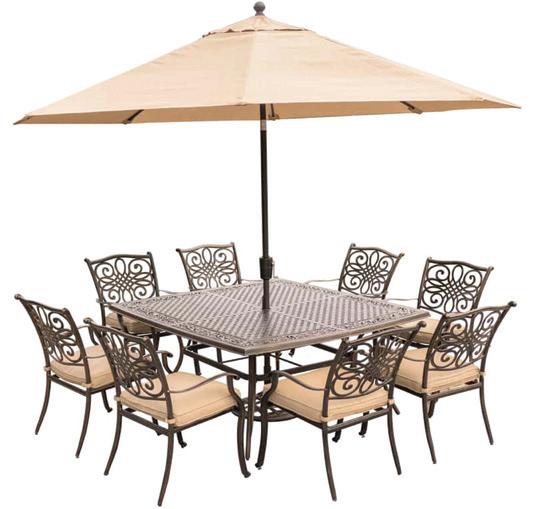

1.Whohada#1hitin1961withthesardonic “Mother-in-Law”?






2.Accordingtotheproverb,whatis“the
2.Accordingtotheproverb,whatis“the









9/15 Official "Someday" Day
9/16 Respect for The Aged Day
9/17 National Citizenship Day
9/18 Air Force Birthday
9/19 Talk Like a Pirate Day
9/20 Constitution Day
9/21 Locate an Old Friend Day



By Matthew Margolis
McGruff the Crime Dog has been helping kids “take a bite out of crime” for more than 40 years. Now, with the economy in the tank and dog theft on the rise, it’s time to give back.
According to recent media reports, dognappings are up by at least 32 percent compared with the same time period last year. The American Kennel Club offers a Companion Animal Recovery service, and the new statistics are based in part on the number of calls they’ve received this year. AKC spokesperson Lisa Peterson told the Chicago Sun Times, “’Some are taken out of yards, some are taken out of cars, some are taken out of pet stores.’ Peterson added, ‘I’ve even seen some taken out of a child’s arms on a park bench.’”
Who would steal a dog? The “who” could be anyone. There “where” could be anywhere. The “why” is almost surely for profit. A stolen dog could be sold, used as a breeder, given as a gift thereby saving the expense, used to fight, held for ransom, or taken in hopes of a reward upon return.
The “how” is the one thing over which we dog owners have some control.
How can you protect your dog from dognappers looking to make a quick buck?
-- Keep your dog on a leash whenever you are off of your own property. Leashed dogs are in your sight and under your control.
-- Don’t leave your dog outside unattended. This includes your own yard if you lack the kind of fencing that keeps dogs in and strangers out. Bring your dog inside or invest in a dog run with a lock for those times when you can’t be outside with him.
-- Do not leave your dog in a car unattended. Besides the threat of heat stroke, a dog alone in a car -- even a locked car -- is a target.
-- Resist the urge to tie up your dog for even a minute and run in for coffee, a snack or an errand. One snip of the leash, and your dog is someone else’s.
-- Microchip your dog. This won’t prevent someone from stealing your companion, but it will be enormously helpful in getting him back where

by Matilda Charles © King Features Synd., Inc.
Think you’re immune from getting scammed in an online romance? Think again.
Authorities recently charged 84 people with running scams around the world designed to defraud gullible people, mostly women, of their money. Only 17 of those crooks have actually been tracked down and arrested as authorities try to hunt down the rest -- no easy feat when it comes to dealing with other countries.
Meanwhile, these smooth-talking masqueraders continue to win the confidence of their unsuspecting and often lonely victims by luring them in with fake information, fake photos, and well-rehearsed lines of flattery and promises.
In one scam, a Japanese woman fell for a man she believed was a U.S. soldier in Syria. She had hooked up with him through an online pen pal site. In reality, he was in Los Angeles and part of a large crew of thieves. In less than a year she sent him $200,000 -- money she had to borrow -- to help him out of a "financial crisis".
There were quite a few warning signs she blindly didn’t heed. She and her new love never talked on the phone, and he wanted her to do some business for him. In this case, it was to manage a shipment of diamonds he claimed to have found. Meanwhile, as the scam progressed, he began asking her for more and more money that he urgently needed to make the deal happen, promising, of course, to pay her back double once it was done. Sadly, she opted to believe what she wanted to believe. Once he had her money she never heard from him again.
A big problem is that these investigations take so long. The one mentioned here started in 2021. You can’t start an online relationship and two weeks later decide to check the news to see if there is an alert about a current investigation or string of arrests. It might take years, and meanwhile the chance of ever retrieving your money is becoming less and less likely.
Some things to think about: These online scammers are experts at what they do. They follow cleverly written scripts when they woo women. They look for your weak points. If you send someone money, understand that they will always need more, and you’ll never see it again.
If anyone asks you to send money, don't do it! Instead, file a report about it with the police. You might be able to provide just the clues they need to catch these heartless thieves.
* * *
Matilda Charles regrets that she cannot personally answer reader questions, but will incorporate them into her column whenever possible. Send email to columnreply2@ gmail.com.
Cody’s Corner (from page 9)
he belongs. Equipped vets, shelters, animal control facilities and emergency animal hospitals can run a quick scan to determine whether a dog has been microchipped. The number on the dog’s chip matches the number on the owner’s registration file. This is a brilliant bit of technology of which all dog owners should take advantage.
-- Don’t forgo the old-fashioned! It is as important as ever to have your dog wear a collar with ID tags that contain your contact information. Again, this won’t prevent a theft, but it can help your dog find his way home.
-- Always have a current photo of your dog, just in case Lost Dog fliers become a necessity. And if they do, don’t be shy about it. Plaster your neighborhood, including any and all nearby vet clinics, animal shelters and animal hospitals. Tell the world your dog is missing! Utilize websites such as FidoFinder.com. Relentless word of mouth is still one of the best ways to ensure a happy reunion. Woof!
Dog trainer Matthew “Uncle Matty” Margolis is the co-author of 18 books about dogs, a behaviorist, a popular radio and television guest, and the host of the PBS series “WOOF! It’s a Dog’s Life!” Read all of Uncle Matty’s columns at www.creators.com, and visit him at www.unclematty.com.
COPYRIGHT 2014 CREATORS.COM









byKaraKovalchik&SandyWood
byKaraKovalchik&SandyWood

1.Whohada#1hitin1961withthesardonic “Mother-in-Law”?
1.Whohada#1hitin1961withthesardonic “Mother-in-Law”?
2.Accordingtotheproverb,whatis“the motherofinvention”?
2.Accordingtotheproverb,whatis“the motherofinvention”?
3.WhatwastherealfirstnameofAfricanAmericancomedienneMomsMabley?
3.WhatwastherealfirstnameofAfricanAmericancomedienneMomsMabley?





by Tom Margenau

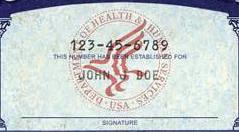
There is probably nothing I am asked more often than some version of this question: “When should I file for my Social Security?” But as I’ve said repeatedly in this column, I am not a financial planner. So I really can’t advise you about the best time to start your Social Security benefits. I can tell you that there is no magic or secret formula. It’s simply a decision only you can make after considering such things as your health and your financial situation.
But what I can do is explain Social Security rules to help you make that decision. In my book “Social Security -- Simple and Smart,” I have a whole chapter devoted to this topic. You can order the book online at Amazon.
Whether you make that decision on your own or with the help of my book or a financial planner, once you decide the month you want your benefits to start, many of you still want to know how far in advance you should file for those benefits. That is the “when to file” advice I am offering in this column.
Your Social Security eligibility date is always a month, not a day. For example, let’s say you were born April 22, 1958, and you want your benefits to start at your full retirement age. The full retirement age for people born in 1958 is 66 and 8 months. So, you will reach full retirement age on December 22, 2024. But the day you reach FRA isn’t really an issue; it’s the month that is key. In other words, your eligibility date isn’t December 22, 2024; it’s just December 2024.
The Social Security Administration recommends that you file three months before your eligibility month. So, if you wanted your benefits to start in December, you could file beginning anytime this month.
I used to advise people that there really was no need to rush because most Social Security retirement claims are very simple, and the SSA processed them in literally a matter of days. In the past, I would have told people whose eligibility date is December that they could even wait until November if they wanted, and there would be a very good chance their first check would show up on time. But staffing cutbacks and other issues seem to have messed things up at the SSA. I’ve heard from so many readers who report to me about delays in either getting through to the SSA in the first place or delays in getting their benefits started.
I guess my motto for the time being is this: Better safe than sorry. So file your Social Security claim three months before your first eligibility month.
But don’t let me scare you. Once you contact the SSA, you’ve established what they call a “protective filing date,” and your rights to benefits are guaranteed from that month forward. For example, let’s say you wanted your benefits to start in December 2024. But for whatever reason, you didn’t get around to filing your claim until sometime in December. Even though your claim might not finish processing until a few months later, you will be paid back to December.
Also remember this: Don’t overthink the question on the application that asks which month
you want your benefits to start. If you want December 2024 to be your starting month, then that is the month you indicate on the form. Don’t put January 2025 because you know the December check is sent to you in January. The question isn’t asking which month you want your first Social Security check to show up in your bank account. It is asking what your first eligibility month for benefits is.
That’s the “when to file” message. So now let’s tackle the “how to file” issue:
Probably 90% of us have rather straightforward Social Security claims. That means you are just filing for your own Social Security benefits. In that case, I strongly recommend you file online at www.socialsecurity.gov. It’s simple and easy. I did so a few years back, and it probably took me all of a half-hour to finish the process. Check the website yourself and see how easy it is.
If you do have a scenario that you think might be complicated (such as trying to get a combination of retirement and spousal benefits), then you should probably do that in person. Call the SSA at 800-772-1213 to set up a phone interview or an in-person interview at your local Social Security office.
And if you are filing for widow’s benefits, that must be done by phone or in person. Claims for widow’s benefits cannot be done online. That’s because there may be filing options a widow has that are more easily explained by talking to someone in person.
What documents do you need to file for my Social Security benefits? It depends on the kind of benefit you are trying to get. Think of it this way: You usually have to provide some kind of evidence to support your eligibility for such benefits. For example, if it’s a retirement claim, you need to prove you are old enough to qualify. To do that, you need a birth certificate. If you are filing for spousal benefits, you need to prove not only your age, but also that you are married to the person on whose Social Security record you are applying. For that, you

1. The book of Judges is found in the a) Old testament b) New testament c) Neither
2. Which scripture contains, "Yea, though I walk through the valley of the shadow of death..."? a) Ruth 4:10 b) Matthew 24:15 c) Job 7:2 d) Psalms 23:4
3. Though lame on both feet, what descendant of Saul continually ate at King David's table? a) Mareshah b) Michal c) Mephibosheth d) Methusael
4. Under what type of tree would the children of Israel come to Deborah for judging? a) Palm b) Sycamore c) Fig d) Cypress
5. From Matthew 8, who was the first woman that Jesus healed? a) Paul's sister b) Naomi c) Peter's mother-in-law d) Deborah
6. In 1 Samuel 4, which priest had a son named Ichabod? a) Agabus b) Phinehas c) Azariah d) Malachi
Sharpen your understanding of scripture with Wilson Casey's latest book, "Test Your Bible Knowledge," now available in stores and online.
(Answers on page 16)
For comments or more Bible Trivia go to www.TriviaGuy.com
need a marriage certificate. If you are a divorced spouse, you also need to provide your divorce papers. If you want to apply for widow’s benefits, in addition to proving your age and marriage, you need a death certificate. In all cases, the SSA wants to see original copies of these documents or copies certified by the record issuer.
One document you don’t need is your Social Security card. I hear from panicky people all the time who tell me they are about to file for Social Security benefits but can’t find their SSN card. I tell them to relax. You do not need the card when you sign up for Social Security.
And speaking of Social Security numbers, many divorced women tell me they are pretty sure they might be due benefits on an ex-spouse’s Social Security record. But they don’t have the guy’s Social Security number, and they are worried they won’t get the benefits without the number. In these cases, the SSA will be able to find the ex’s SSN. They might need some identifying information from you (such as his name, his date and place of birth, etc.), but you should be able to provide them with that. * * *
If you have a Social Security question, Tom Margenau has two books with all the answers. One is called “Social Security -- Simple and Smart: 10 Easy-to-Understand Fact Sheets That Will Answer All Your Questions About Social Security.” The other is “Social Security: 100 Myths and 100 Facts.” You can find the books at Amazon.com or other book outlets. Or you can send him an email at thomas.margenau@comcast.net. To find out more about Tom Margenau and to read past columns and see features from other Creators Syndicate writers and cartoonists, visit the Creators Syndicate website at www.creators.com.
COPYRIGHT 2024 CREATORS.COM




DEAR DR. ROACH: I’m a 65-year-old, overweight white woman. I recently had a DEXA scan, and based on the results, my general physician prescribed Fosamax for osteopenia.
The first dose created a horrible reaction two days after ingestion, with severe pain in both of my arms, my neck, and my legs. I was in absolute agony for two days, then it cleared up.
With the next dose a week later, I hesitated, but still decided to take it. Two days later, the reaction hit me again, only worse. I could barely walk, and my energy was so low. I spent four days in bed, except to cry when heading to the bathroom. I had not taken my Lasix prescription for those four days, as I could barely make it to the bathroom. I contacted my doctor, and she immediately discontinued the Fosamax. She’s referred me to a rheumatologist.
I read that this drug has all my symptoms, plus more, listed under the severe reaction warning. I will not take it again. Also, a friend told me that this drug is not effective for osteoporosis after more than 20 years of drug tests, and I should not have been prescribed this drug, since I have osteopenia, not osteoporosis. Your thoughts?
-- C.W.
ANSWER: Alendronate (Fosamax) is in the class of drugs called bisphosphonates. These are powerful drugs that should not be prescribed lightly. They do have the potential for severe side effects. Severe musculoskeletal pain can occur days or months (sometimes years) after starting the medicine.
The Food and Drug Administration has advised prescribers to discuss this possibility with their patients so that the drug can be stopped immediately if it occurs. There are other options available if the person really needs treatment.
Your friend is half right. Powerful drugs like Fosamax are usually not indicated in people who have low bone mass (osteopenia) without osteoporosis. However, a history of a fragility fracture (breaking a bone from minor trauma that isn’t expected to cause a fracture) can make the diagnosis of osteoporosis, even if the bone density isn’t in the usual osteoporotic range. A person can have a high risk of fractures for other reasons, and a clinical tool called the FRAX
score helps clinicians identify those who might benefit from treatment.
But your friend is also half wrong. When used appropriately, Fosamax and other bisphosphonate drugs are effective at reducing the risk of fractures. A vertebral body fracture can cause years of pain and be avoided easily, while a hip fracture can be devastating. So, there are very good reasons to prescribe these medicines.
Finally, let me warn readers against complacence in treatment with these drugs. They may be appropriately prescribed for a high-risk person, but most people should not stay on this drug forever. Follow-up DEXA scans should guide therapy, and after three to five years, a conscious decision should be made whether to continue therapy.
Readers who have been on these drugs for more than five years and haven’t had careful follow-ups on their results should ask their doctors whether they still need to be taking them.
Dr. Roach regrets that he is unable to answer individual questions, but will incorporate them in the column whenever possible. Readers may email questions to ToYourGoodHealth@med.cornell.edu
(c) 2024 North America Synd., Inc.
All Rights Reserved

by Freddie Groves
Two thieves created a scam they managed to keep going for over a decade before finally being caught. Keeping it going that long doesn’t make them smart; it makes them long-term lowlifes.
Solely for the purpose of scamming the government, two guys started up a couple of construction companies. Their goal was to bid on the special contracts with the Department of Veterans Affairs that were for small businesses owned by service-disabled veterans. During that decade, they managed to get 67 of the small business contracts, the majority of which were for over $1 million each. The problem was that neither scammer had ever served in the military and therefore didn’t even qualify. Instead, they paid genuine servicedisabled veterans to lie and say they owned and ran the companies.
Being awarded the contracts took 67 contracts away from real veterans trying to honestly run real businesses.
The Veterans Entrepreneurship and Small Business Development Act of 1999 aims to award 3% of all government contracts to service-disabled veterans who own small businesses, although in recent years that figure has exceeded 4% of contracts. At this point there are nearly 2 million veteran-owned businesses.
In addition to the 67 scam contracts, in one case the thieves filed a protest against a VA decision to award a contract to another company. The VA had received five proposals for a certain job and chose one based on their examination of that company’s qualifications, even though it was not the lowest bid. The scammers lodged protest of several points.
Enter the Office of Inspector General for the VA to investigate the ongoing fraud. For all of their good work, the OIG can’t control the courts. The two scammers will never see a day of jail time even though the penalty for just one of the crimes could have sent them away for 10 years. Instead, they were given a year of probation, some community service and a fine. Clearly not enough to send a strong message to other would-be scammers.
The judicial system is broken.
* * *
Freddy Groves regrets that he cannot personally answer reader questions, but will incorporate them into his column whenever possible. Send email to columnreply2@gmail.com.

The
If I agreed with you, then we would both be wrong.
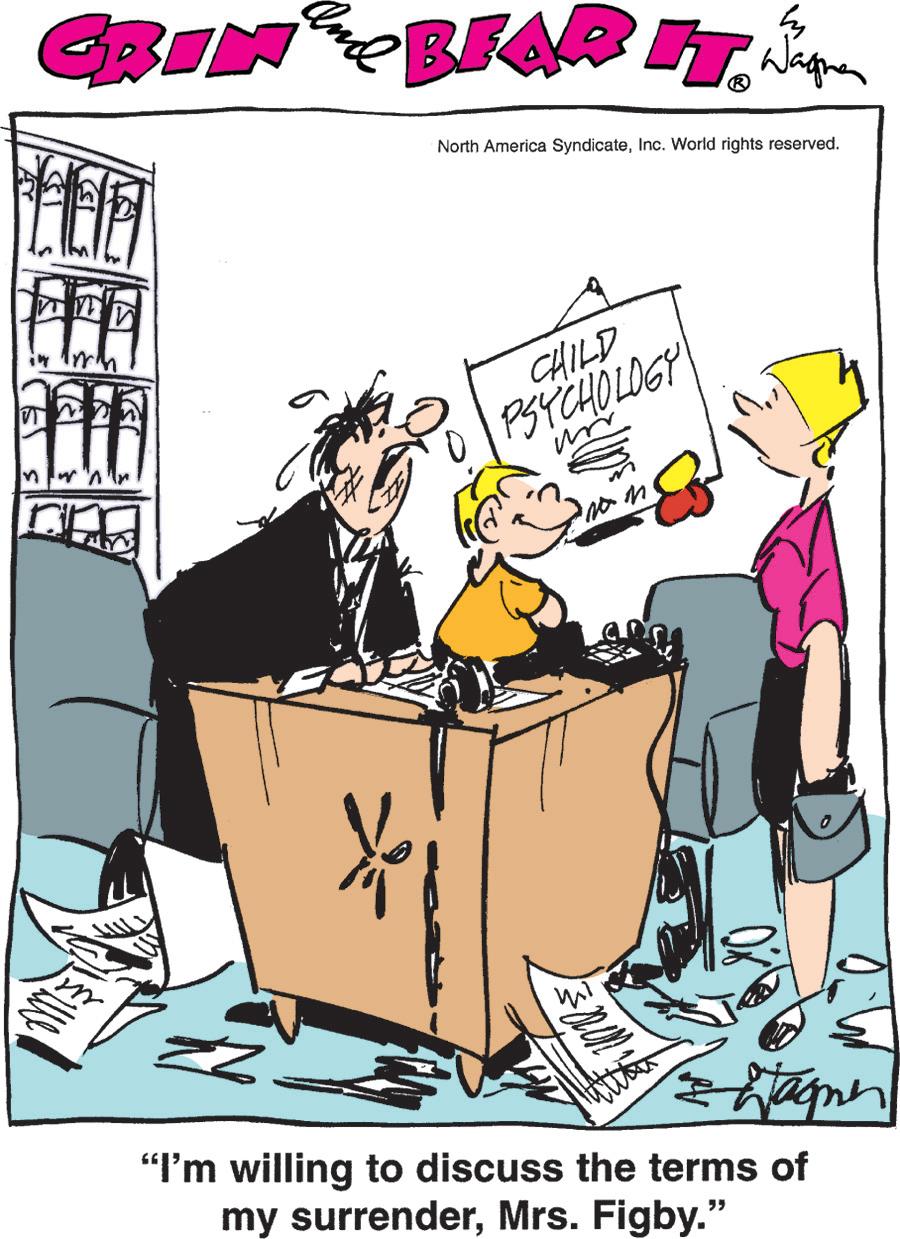
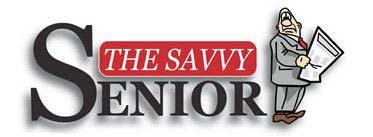
-- by Jim Miller
DEAR SAVVY SENIOR: I’m going to retire in a few months and need to get some temporary health insurance until I can enroll in Medicare at age 65. What are my options? -- Early Retiree
Dear Early: There are several places early retirees can find health insurance coverage before Medicare kicks in, but the best option for you will depend on your income level, your health care needs, and how long you’ll need coverage for. Here’s where to look:
Affordable Care Act:
For most early retirees who aren’t yet eligible for Medicare, the Affordable Care Act (ACA) health insurance marketplace, also know as Obamacare, is the best option for getting comprehensive health coverage. And you won’t be denied coverage or charged extra for preexisting health conditions.
And, if your income falls below the 400 percent poverty level after you retire – anything below $60,240 for a single or $81,760 for a couple in 2024 – you’ll also be eligible for a subsidy that will reduce your monthly premiums. The ACA also ensures that at least through 2025, households with incomes above that 400 percent poverty level will not have to pay more than 8.5 percent of their income for a benchmark policy.
To see how much subsidy you may be eligible for, use Kaiser Family Foundation subsidy calculator at KFF.org/interactive/ subsidy-calculator
To shop for ACA plans in your state, visit HealthCare.gov or call 800-318-2596. Or, if you want some extra help, contact a certified agent or broker at HealthCare.gov/ find-assistance
COBRA:
Another temporary health insurance option you may be eligible for is the Consolidated Omnibus Budget Reconciliation Act (COBRA). Under this federal law, if you work for a company that has 20 or more employees, you can remain on your employer’s group health plan for at least 18 months –but could last up to 36 months. But be aware that COBRA isn’t cheap. You’ll pay the full monthly premium yourself, plus a 2 percent administrative fee.
To learn more, talk to your employer benefits administrator or contact the Employ-
ee Benefits Security Administration (Askebsa.dol.gov) or call 866-444-3272.
If, however, the company you work for has fewer than 20 employees, you may still be able to get continued coverage through your company if your state has “mini-COBRA.” Contact your state insurance department to see if this is available where you live.
If you can’t find an affordable ACA plan and COBRA is too expensive, another possible option is short-term health insurance. These plans, which are not available in every state, are cheaper, bare-bones health plans that provide coverage for up to 3 months with a one-month extension available. But be aware that short-term plans don’t comply with the ACA so they can deny sick people coverage, they don’t cover preexisting conditions and they can exclude coverage essentials like prescription drugs.
To find and compare short-term health plans, try sites like eHealthInsurance.com or PivotHealth.com
Healthcare sharing ministries:
If the previously listed options don’t work for you, another temporary solution could be healthcare sharing ministries (HCSM). These are cost-sharing health plans in which members – who typically share a common religious belief – make monthly payments to cover expenses of other members, including themselves.
HCSM’s are cheaper than paying full out-of-pocket costs for traditional health

insurance but be aware that HCSM’s are not health insurance. They don’t have to comply with the consumer protections of the ACA, and they can also reject or limit coverage for having pre-existing health issues and limit how much you’ll be reimbursed for your medical costs. Preventive care typically isn’t covered either.
To look for these plans, comparison shop at the three largest providers – Samaritan Ministries (SamaritanMinistries.org), Medi-Share (MyChristianCare.org), and Christian Healthcare Ministries (Chministries.org).
Send your senior questions to: Savvy Senior, P.O. Box 5443, Norman, OK 73070, or visit SavvySenior. org. Jim Miller is a contributor to the NBC Today show and author of “The Savvy Senior” book.




by Anne McCollam Creators News Service
Q: This is a rather old black and white photo of a water pitcher that I have, so I apologize for the poor image quality.
The pitcher is part of a collection of Hall’s Superior Jewel Tea Homemaker Institute Quality Kitchenware that I have. The pattern is “Autumn Leaf.” I probably have about 30 pieces that include plates, platters, saltand-pepper shakers, bowls, a pitcher, and a cake plate. They are all in excellent condition. I would appreciate any information you may have on how old these dishes are, where they were made, and how much they are worth.
A: Hall’s China Co. made your water pitcher. They were located in East Liverpool, Ohio, and introduced the “Autumn Leaf” pattern in 1933 for the Jewel Tea Co.

Several other companies, including Paden Pottery, Harker Potteries, also made the pattern, and Crooksville China Co. and Hall China Co. produced the “Autumn Leaf” pattern until 1978.
Most individual pieces are in the range of $25 to $75 each and some can go much higher. Cookie jars, pedestal cake plates, marmalade dishes with under plates are all in the range of $150 up to several hundreds.
Your water pitcher was made in the 1950s and would probably be worth $50 to $75.
***
Q: This mark is on the bottom of a set of eight porcelain cups and saucers that I inherited. They were given to my grandmother in the early 1900s. I think they are close to 100 years old, but I’m not sure.
They are decorated with a band of multi-colored flowers and gold trim against a white background.
Do you know when they were made, anything about the maker, and their value?

A: Your cups and saucers are indeed 100 years old. They were made around 1915. Thomas Forester and Sons was located in Longton, Staffordshire, England, from 1883 to 1959.
Forester started out with several small potteries. When his factories grew, he built the Phoenix Works in 1879. As the business developed, his sons joined the company. At the peak of production, there were six large kilns in operation and they employed over 400 workers. In addition to porcelain, the Foresters produced a line of majolica.
Your cup and saucer set would probably be worth $200 to $250.
Antiques expert and columnist Anne McCollam has since retired and no longer receives inquiries nor answers reader letters. Due to the popularity of her column, this publication will continue to reprint previous columns of interest to our readers.
To find out more about Anne McCollam and read features by other Creators Syndicate writers and cartoonists, visit the Creators Syndicate website at www.creators.com
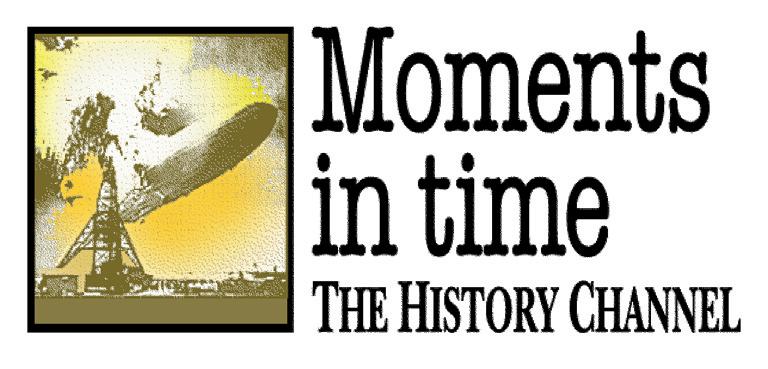

* On Sept. 16, 1951, 19 people enjoying an air show were tragically killed when a monoplane performing aerial stunts crashed into the crowd in Colorado. The pilot was performing a snap roll when a wingtip caught the ground and propelled the craft into spectators.
* On Sept. 17, 2006, an E. coli outbreak, blamed on spinach, occurred in the United States. The vegetable was recalled from stores and three deaths were attributed to the outbreak.
* On Sept. 18, 1973, future president Jimmy Carter filed a report with the National Investigations Committee on Aerial Phenomena, claiming he had seen a UFO several years previously in Leary, Georgia, which he described as a silent ball of light that changed size, brightness and color over a period of 10-12 minutes.
* On Sept. 19, 1995, The New York Times and The Washington Post published the Unabomber’s 35,000-word manifesto, as in June he had said he would kill again if they did not do so by a specific deadline. The FBI hoped the publication might help reveal his identity.
* On Sept. 20, 1881, following the assassination of James Garfield, Vice President Chester Arthur was inaugurated on Sept. 20, 1881, becoming the third person to serve as president in that year. Interestingly, Garfield’s assassin wrote to Arthur from jail, taking credit for his promotion into the White House.
* On Sept. 21, 1955, eight women launched America’s first lesbian-rights group, the Daughters of Bilitis, initially as a social alternative to the frequently raided bar scene.
* On Sept. 22, 1828, Shaka, founder of the Zulu Kingdom of southern Africa, was murdered by his two half-brothers after his mental illness threatened to destroy the Zulu tribe. Although at first a brilliant military organizer, his grief at losing his mother in 1827 led him to enact strange laws, including a prohibition against planting crops and using milk, and to order the execution of all pregnant women and their husbands. The crisis came when he sent his army on an extensive military operation, and upon their returning weak and exhausted, immediately commanded them to start out all over again.
(c) 2024 King Features Synd., Inc.
If I knew some cruel folks had been dispatched, I would probably cry "The brutish are coming!"
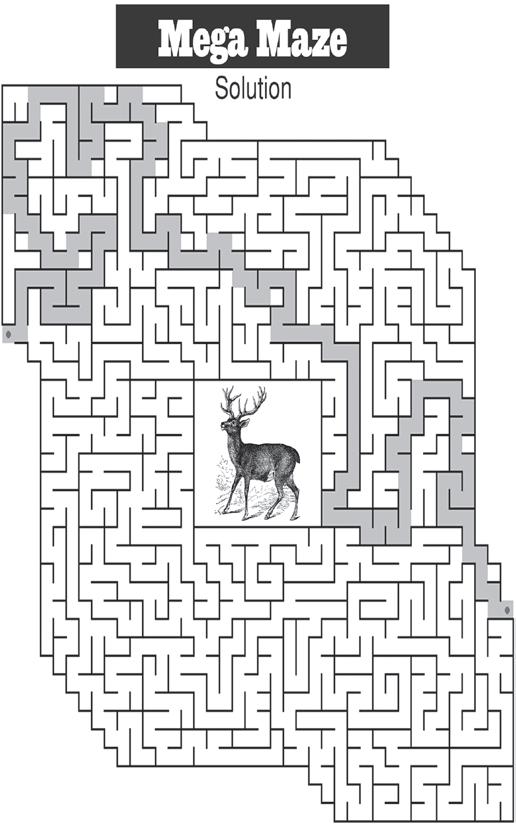

"We were going to pay a company $275,000 to design and host our website, but my 8-year-old nephew has agreed to do it for a skateboard."
Human Body: from page 3
down the side of your iced tea glass as you sit poolside in the summer. Warm air holds more moisture than cold air. When the warm air of your lungs meets the cold air at the tip of your nose, extra moisture condenses and your nose drips.
• Like all mammals, humans are warm-blooded. This feature makes it easy to be on your feet and on the go regardless of how cold it is outside at any given moment. It also means we need to eat on a very regular basis to maintain that internal furnace. What a human eats in a single day would sustain an adult crocodile, hiding silently and unmoving at the bottom of a river, for a month.
• In one study, a marathon runner was tested in controlled circumstances. With monitors hooked up to his body, he was asked to run on a treadmill for as long as he could. The temperature of the room started at -49°F and gradually warmed up to 131°F. These temperature extremes are considered to be the limit of human tolerance. The researchers found that regardless of the external temperature in the room, the temperature of the runner’s body remained steady at 98.6° F, varying only one degree either way as the test progressed.
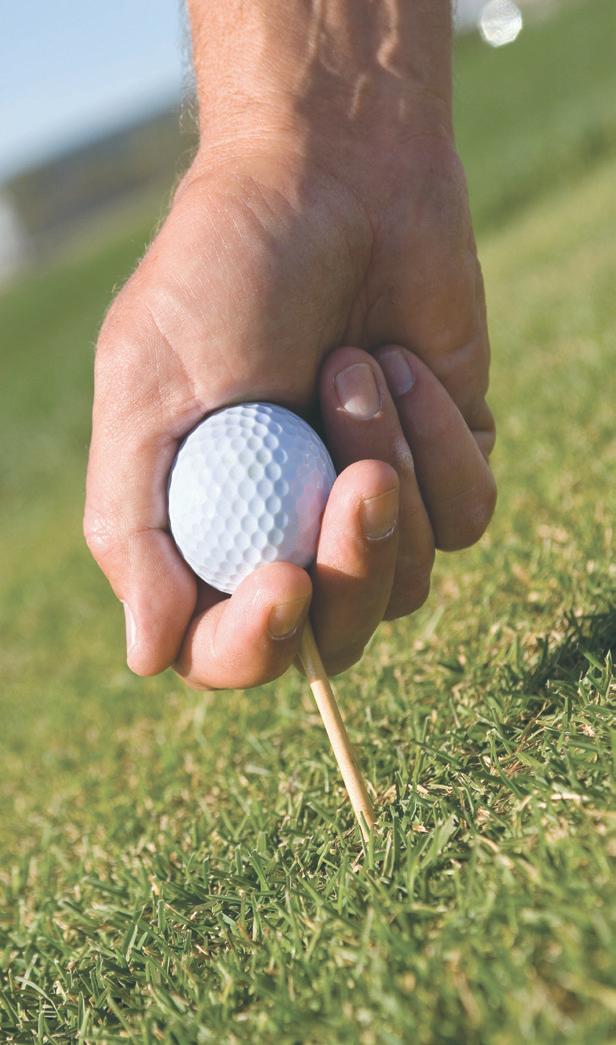







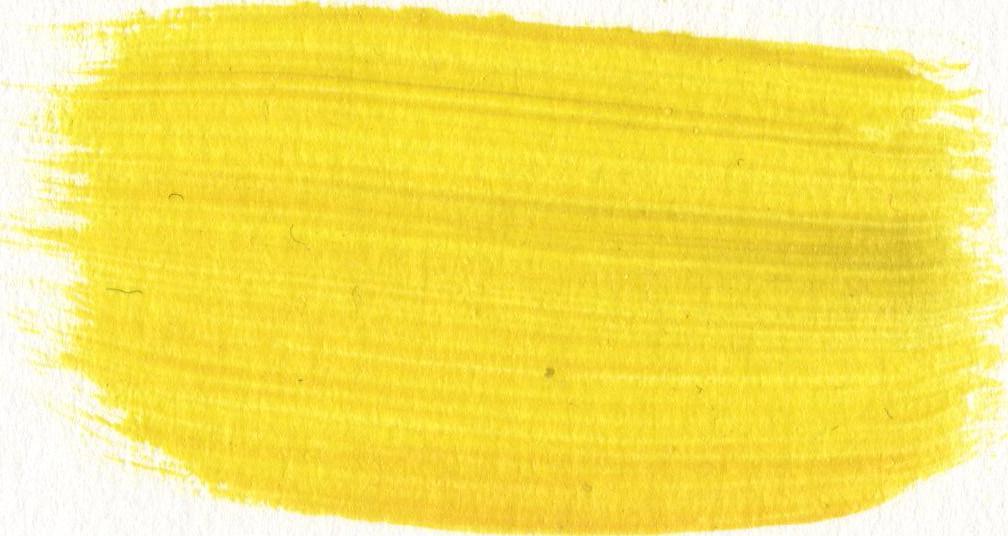




by Jason Jenkins
There are several movements in the very beginning of the golf swing that can be quite detrimental to the success of the rest of the swing. One of these deadly moves is when the head moves toward the target as a result of poor body movement or weight shift. As a matter of fact, no great player in the history of golf has ever moved their head toward the target in the takeaway.
The takeaway should be a culmination of club, arm, shoulder, and body movements away from the target. The head does not have to move more than a few inches, but it should never go against the grain of the club and arm movement.
To get a better awareness of your own takeaway, place something on the ground in front of you where it aligns with the shadow of your head (left ear preferred). Watch your shadow to see that you don’t move toward the target!



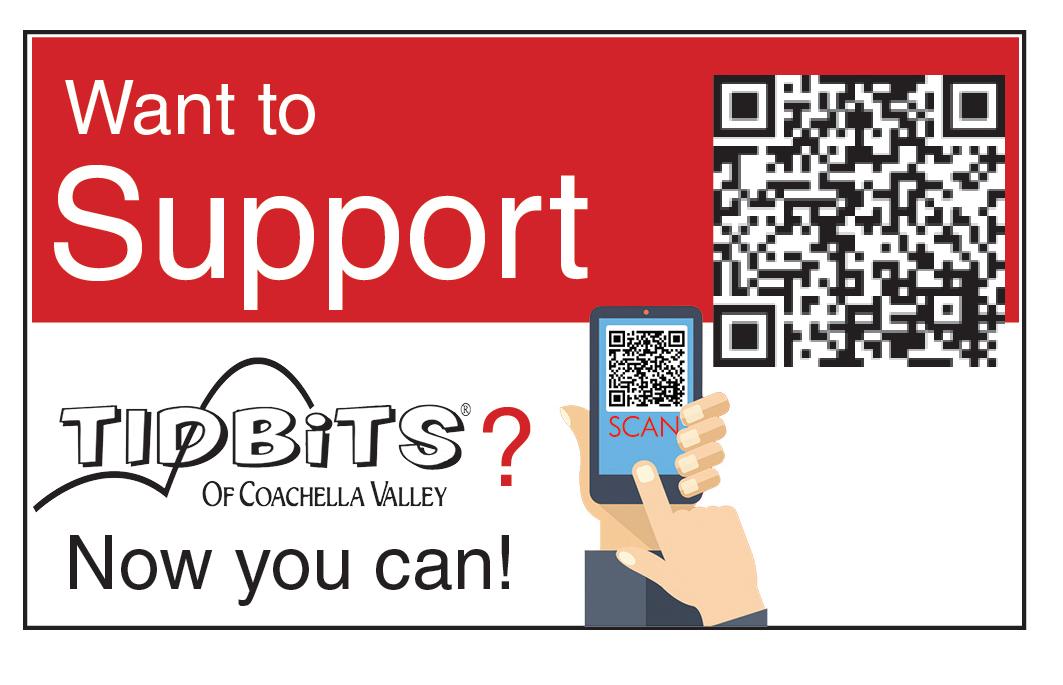

Linda Thistle
